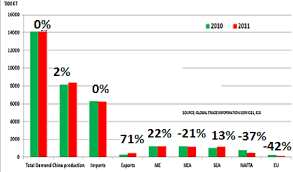Concentrating photovoltaic solar power (CPV) has a big upside: Focusing sunlight onto solar cells can significantly increase power output.
The technology, however, only works if the solar panels track the sun across the sky, and tracking systems are expensive. Now, scientists at Argonne-Northwestern Solar Energy Research Center say they might have found a path around that cost barrier.
The Argonne researchers are toying with fluorescent plastics called luminescent solar concentrators (LSCs). Unlike the lenses and mirrors typically used with CPV systems, modules using these specialized films (pictured below), treated with phosphorescent dyes, could operate without solar tracking, because they capture sunlight and change it to a different wavelength.
“We’re actively shifting the frequency of the light by absorbing and re-emitting it,” says researcher Chris Giebink. “LSCs act kind of like flat funnels – we try to absorb a lot of light over the face of a plastic slab filled with dye, and then re-direct it all back out the edges. The whole process is designed to intensify the light as much as possible.”
The researchers had struggled with the light getting lost in the slabs, either due to reabsorption or to scattering. But getting down to a nano level provided a breakthrough: Using a series of thin films with nanometer-scale changes in thickness, they were able to create a ‘resonance-shifting’ effect that dramatically trimmed reabsorption. “It really is like giving light amnesia – if light forgets how it came in, it’s less likely to get reabsorbed or scattered out,” scientist Gary Wiederrecht says.
Where does the research go now? “We’ve demonstrated the general principle, now we just have to find the best pattern of dye thicknesses or alternatively the best way to vary the thickness of the glass,” Giebink says.
Source : earthtechling.com





